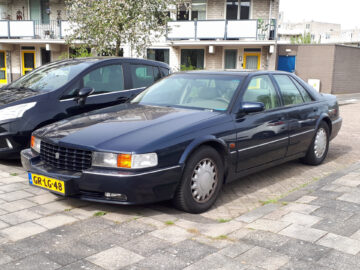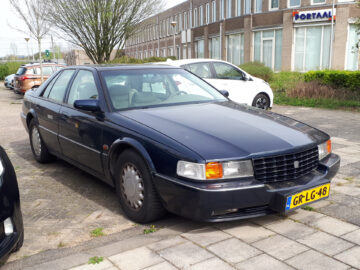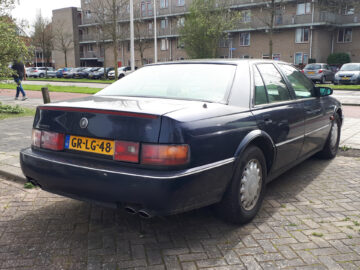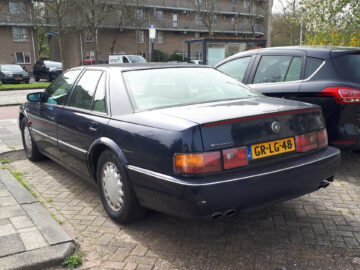Spotted: a Cadillac Seville STS
For most years of its production, the Cadillac Seville was the brand’s “entry-level” model, although the car was positioned in the upper middle class. For model year 1992, the fourth model generation entered the market. Compared to its square predecessor, the new model had a modern, almost European-looking design. The downsizing of the model line also came to an end. While the previous model was still a relatively compact 4.8 meters long, the new Seville almost reached 5.2 meters.
Two levels of equipment
The Seville was available in two trim levels: the SLS (Seville Luxury Sedan) and the STS (Seville Touring Sedan). This abbreviation came after the name Seville, even though it was actually double. The SLS and STS also had a slightly different visual dressing. The most noticeable difference was the grille. The SLS had a chrome grille and the logo standing on the hood, the STS had the logo in the body-colored grille.
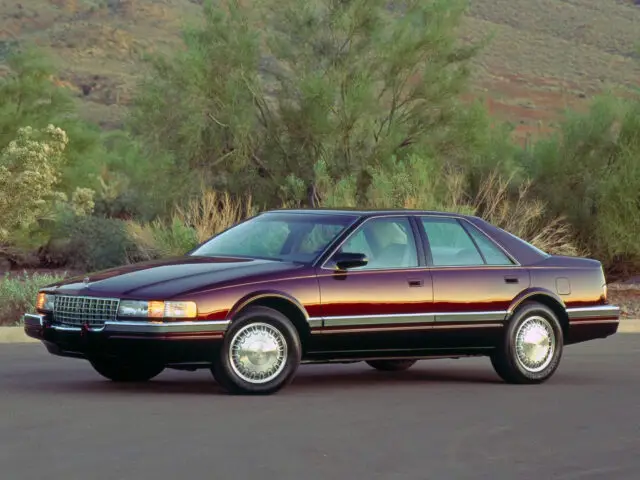
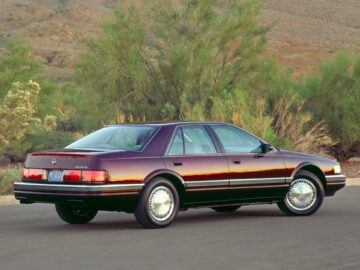
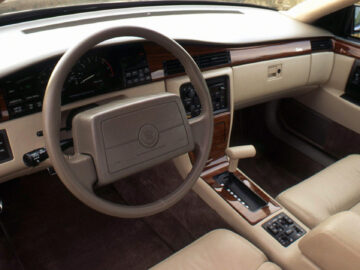
Cadillac Seville richly equipped
Of course, the Seville was richly equipped, with standard speed-dependent power steering, power-adjustable front seats with memory function (memory also for some other settings) and self-leveling rear suspension. The STS complemented that with such features as automatic windshield wipers and the even more advanced Active suspension.
Most powerful front-wheel drive vehicle
The downsizing was also over in terms of engines: when introduced, the Seville always had a 4.9-liter V8 with 150 kW (204 hp). For the 1993 model year, the STS got a 220 kW (299 hp) 4.6-liter V8, and for the 1994 model year, the SLS got a 205 kW (279 hp) version of that engine. Power for the STS increased to 224 kW (305 hp). All models had a four-speed automatic transmission and front-wheel drive. This made the STS, along with the Eldorado, the most powerful front-wheel-drive car on the North American market as of 1994. It didn’t make the car really sporty, but a 0-60-mph time of 6.9 seconds (and 7.4 sec. for the SLS) was pretty neat.
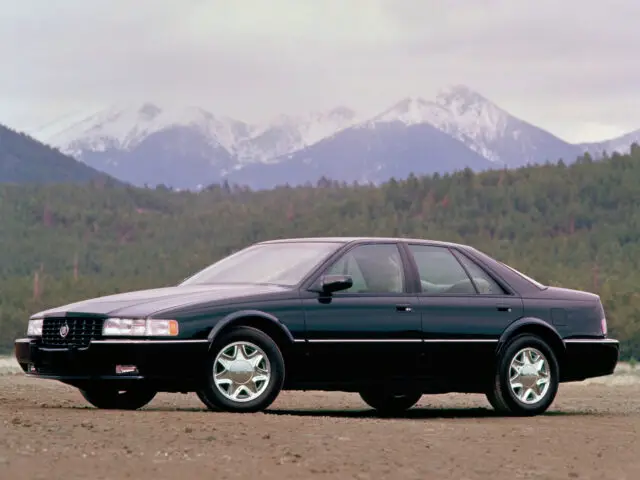
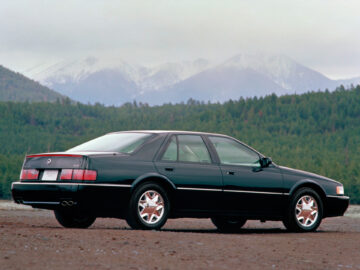
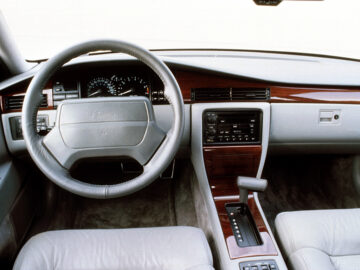
Updates for Cadillac Seville
An update followed for model year 1996. The electronics were revamped to comply with the new OBDII standard and the interior was modified at points. The main news was a steering wheel with control buttons for audio and climate functions, and a car phone and two new Bose audio systems were added to the options list. Very modern at the time was a CD changer for as many as twelve CDs, placed in the luggage compartment.
Some more electronics were updated for the 1997 model year, and because of increasing competition, the price increase of the “facelift” was largely reversed again. Deliberately not completely, as the Seville was positioned slightly higher in the market than before. Indeed, the role of entry-level model was taken over by the new Catera.
Evolution for Cadillac Seville
The fourth-generation Seville was received with enthusiasm by the press and public at its introduction and managed to maintain that popularity throughout its production run. Thus, the fifth generation introduced for model year 1998 was primarily an evolution of the fourth.
The spotted specimen
In Utrecht, we saw this 1993 Cadillac Seville STS. The car is original Dutch. The European version of the Seville was basically the same as the American, but the car was fitted with orange indicators. At the front, this did look a bit odd, in that the headlights were interrupted by an orange “block.
